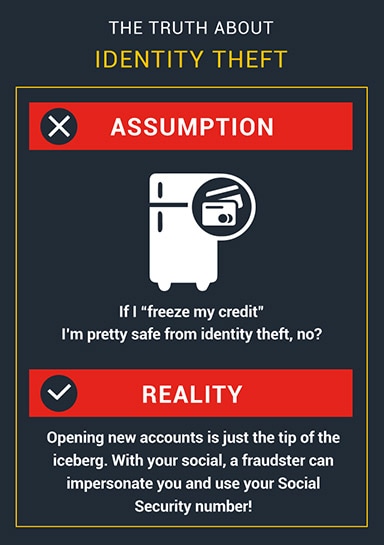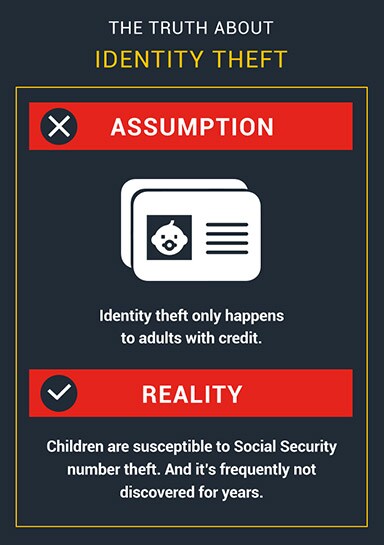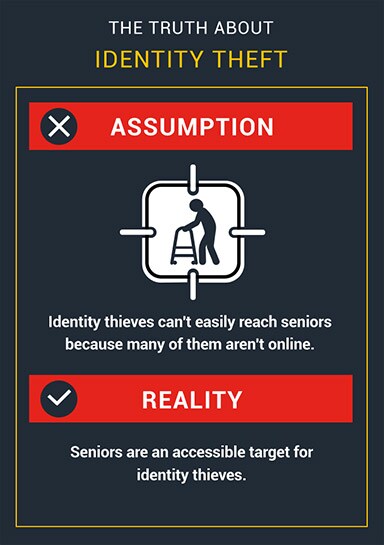Nearly 60 million Americans have been affected by identity theft. You might even know someone who’s been a victim…
By NortonLifeLock | February 10, 2020
Nearly 60 million Americans have been affected by identity theft. You might even know someone who’s been a victim, so it could happen to anyone. There are a host of misconceptions about how to help protect yourself against identity theft. Perhaps you’ve heard some of these?

A ‘credit freeze’ can help stop thieves from opening new accounts in your name. It’s an instant red flag because a lending institution or creditor won’t lend to an individual if they cannot access that person’s credit report. However, once your Social Security number (and any number of other tyes of personal information) is obtained, thieves can still commit medical fraud and obtain medical services and even get prescriptions filled in your name! A credit freeze can’t protect you from tax refund fraud—where thieves pose as you and claim a refund in your name. Nor does a credit freeze help with employment fraud—where a thief uses your stolen social security number to get a job. That person then gets paid in your name—and the IRS and other agencies could blame you for not reporting proper income.

Unfortunately, the notion that children are safe from identity theft is wrong. In fact, the ID Theft Resource Center says that in 2017 over a million kids were targets of identity theft, which resulted in over $540 million in out-of-pocket damages for families.
What makes kids such an appealing target for identity thieves? For one thing–their credit histories are clean. If a thief can cobble together a kid’s social security number plus another piece of identifying information like address, date-of-birth, or mother’s maiden name (for example) they may be able to open an account and proceed to rack up charges.
Another attractive element: it can be years before child identity fraud can be detected because a kid may not seek a credit card or student loan until later. So, if your child receives suspicious bills or gets a notice from the IRS—pay attention because these can be signs of identity theft.

According to the University of Texas’ Center for Identity, over half of identity thefts happen offline. All it takes is a few pieces of someone’s personal information like their name and Social Security number. Many seniors are on Medicare, and it wasn’t until 2015 that HHS required Social Security numbers to be removed from card. (It’s called the Social Security Number Removal Initiative, which won’t be fully implemented until 2020.)
Once a thief gets a senior’s Social Security number, they can commit medical fraud, and claim health benefits, services, and even get prescriptions (to presumably use or sell). Or thieves might commit criminal identity fraud. That’s when a criminal furnishes someone else’s name and social security number when arrested to keep his or her record clean.

In 2018, nearly 58% of American households reported using at least one debit card. And unfortunately, card features don’t always protect you from credit-related identity theft, like someone opening a credit account in your name. Banks that alert you to unauthorized transactions might not be able to catch this type of identity theft, so you might still be liable to pay for someone else living it up on your dime. Each organization handles coverage and liability differently. And there may be a limit to how much you can be reimbursed without an investigation. In fact, TransUnion says it can take the average consumer $500 and 30 hours to resolve a single ID theft claim.5 Do you have time for that?
Based on an online survey of 5,000 US adults conducted by The Harris Poll on behalf of Symantec, January 2019.
Take the necessary actions to manage and secure your credit!







